Hughes & Kettner MSM-1 Handleiding
Bekijk gratis de handleiding van Hughes & Kettner MSM-1 (10 pagina’s), behorend tot de categorie Netwerkkaart/adapter. Deze gids werd als nuttig beoordeeld door 13 mensen en kreeg gemiddeld 4.2 sterren uit 7 reviews. Heb je een vraag over Hughes & Kettner MSM-1 of wil je andere gebruikers van dit product iets vragen? Stel een vraag
Pagina 1/10

Hughes & Kettner MSM-1 User Manual
Note: These instructions were written specifically for the Hughes & Kettner ATTAX preamp, but they apply
equally to the MIDI-upgradeable amps from Hughes & Kettner: the TriAmp head and combo, the TUBE 50
head/combo and TUBE 100 head, the ATTAX 100 and ATTAX 200 heads and combo amps, and the
BassBase 600 head. More follow this document.general installation instructions
Installation
1. Connections and Control Features
2. MIDI Functions
3. Standard Setup and Cable Connections
4. Short Instructions
Operation
1. Selecting MIDI Channels and the Omni Mode
2. Storing Your Presets
3. Activating Stored Presets via MIDI
Additional MIDI Setups
Troubleshooting
INSTALLATION PROCEDURE: MSM-1 into the ATTAX PREAMP
The ATTAX and the MSM-1 MIDI SWITCHING MODULE are electronic devices that operate on AC power. If
you are not qualified to install the MSM-1, you are risking a potentially life-threatening electric shock. Do
yourself a favor and ensure you leave the installation to an authorized dealer only, both a safety and a
warranty requirement. It takes just a few minutes, and it is well worth waiting for.
Proceed as follows:
Switch the ATTAX off.
Remove the AC mains power cord from the back of the unit.
Remove the four screws from rear panel cover plate and then remove the cover plate.
Remove the screws from the top of the chassis.
Lift the chassis cover off.
Insert the MSM-1 in the module chamber and fasten it to the chassis using the four screws. Ensure the
electronic components and the module inscriptions are facing up.
Connect the MSM-1 to the ATTAX by carefully plugging the ribbon cable’s connectors to the
appropriate socket. Note the markings on the connectors and ensure they face the grooved portion of
the socket when you plug the connectors in.
Seite
1
von
10
Hughes & Kettner MSM
-
1 User Manual
22.08.2007
file://C:\Dokumente und Einstellungen\RForse\Desktop\msm1manual.htm

Ensure the connector fits snugly and the connector markings match the socket’s grooved portion.
Check all connections carefully. Then:
Replace and fasten the chassis cover.
Plug in the AC mains cable. Switch on the power.
Press all front panel buttons, one after the other, to make sure the ATTAX functions properly.
The ATTAX should respond to each button as it did before you installed the module (refer to the
ATTAX manual).
Follow the steps described in to ensure that the MSM-1 functions properly. Short Instructions
CONNECTIONS AND CONTROL FEATURES
1. MIDI IN JACK
The MIDI IN jack is designed to receive MIDI data. Any device capable of generating MIDI data can be
connected here via its MIDI OUT jack. In most cases, a MIDI FOOT CONTROLLER or MIDI EFFECTS UNIT
is the device you will use.
2 MIDI THRU JACK
The MIDI THRU jack is used if you want to relay incoming MIDI messages to an additional MIDI device, e.g.
an effects processor. Simply connect the device’s MIDI IN to the MSM-1 's MIDI THRU. This enables you to
address the ATTAX and one or more additional devices via a single MIDI command.
3 MIDI RECEIVE CHANNEL SWITCH
This five-way DIP switch determines on which MIDI channels the MSM-1 receives MIDI messages. You can
select a single CHANNEL (1 through 16), or all MIDI CHANNELS at once.
MIDI LEARN BUTTON (front panel)
Seite 2 von 10Hughes & Kettner MSM-1 User Manual
22.08.2007
file://C:\Dokumente und Einstellungen\RForse\Desktop\msm1manual.htm

The MIDI LEARN BUTTON on the ATTAX front panel is operable after the MSM-1 is installed, and is used to
assign ATTAX channel/effects combinations to various memory locations.
MIDI FUNCTIONS
MIDI is the abbreviation for Musical Instrument Digital Interface. MIDI is an international standard in which
musical information, to include sound parameter changes, is translated to digital data and sent to various
instruments, e.g. amps, effects devices, keyboards, etc.
The MSM-1 can process MIDI commands containing sound changes, i. e. messages that change the ATTAX
channel/effects loop settings. These commands are referred to as MIDI PROGRAM CHANGE MESSAGES.
They consist of a MIDI CHANNEL NUMBER and a MIDI PROGRAM number.
MIDI CHANNEL NUMBER
A typical guitar rack can contain several MIDI capable devices. You must assign each device a specific MIDI
CHANNEL NUMBER to ensure the message is addressed to the right device. 16 MIDI CHANNELS (1 through
16) are available. For instance, if you assign MIDI CHANNEL NUMBER 7 to the MSM-
1 (refer to Section 2.1),
then the module reacts exclusively to commands addressed to MIDI CHANNEL 7.
OMNI MODE
If you want to address several devices in your rack simultaneously, switch on the OMNI MODE for each
device. All devices will then ignore the MIDI CHANNEL NUMBERS and respond to MIDI commands on all
CHANNELS. Refer to Section 2.1 for information on how to select the MSM-1 OMNI MODE.
EXAMPLE
The MSM-1 is set to MIDI CHANNEL 3. A MIDI command containing a "MIDI CHANNEL 3/PROGRAM
NUMBER 17" message is sent. The MSM-1 responds by activating the channel and effects loop combination
saved on preset 17.
STANDARD SET-UP / CABLE CONNECTIONS
Seite 3 von 10Hughes & Kettner MSM-1 User Manual
22.08.2007
file://C:\Dokumente und Einstellungen\RForse\Desktop\msm1manual.htm
Product specificaties
| Merk: | Hughes & Kettner |
| Categorie: | Netwerkkaart/adapter |
| Model: | MSM-1 |
Heb je hulp nodig?
Als je hulp nodig hebt met Hughes & Kettner MSM-1 stel dan hieronder een vraag en andere gebruikers zullen je antwoorden
Handleiding Netwerkkaart/adapter Hughes & Kettner

15 Augustus 2023
Handleiding Netwerkkaart/adapter
- Maxxter
- Apc
- Clas Ohlson
- EVOLVEO
- EXSYS
- Manhattan
- Terris
- Steren
- Cisco
- Draytek
- Logilink
- OvisLink
- EtherWAN
- Audac
- Emtec
Nieuwste handleidingen voor Netwerkkaart/adapter
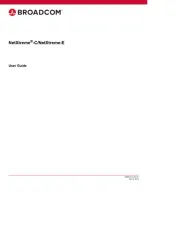
29 Juli 2025
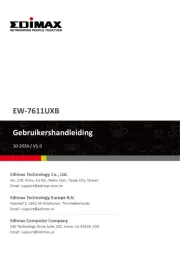
28 Juli 2025
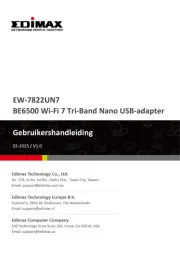
28 Juli 2025
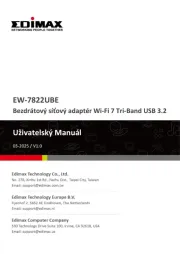
28 Juli 2025
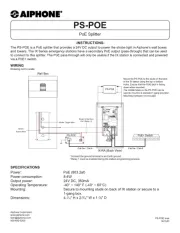
28 Juli 2025
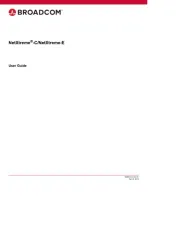
28 Juli 2025
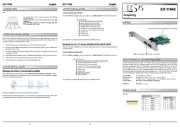
26 Juli 2025
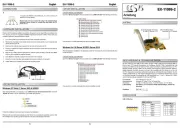
25 Juli 2025
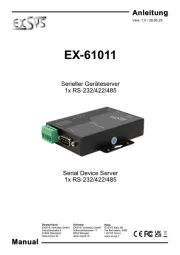
25 Juli 2025
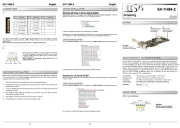
25 Juli 2025